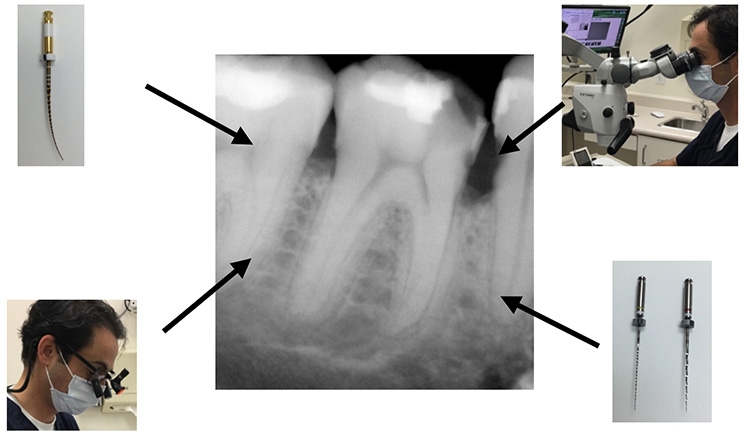
The quick answer to the above question is yes and no. Allow me to explain.
Yes, It’s an Issue
The management of calcified canals has always complicated root canal therapy. By no means has it been easy to locate, negotiate, and fully instrument calcified root canals. Furthermore, an increasingly aging population, retaining their teeth longer, has translated into a growing number of root canal treatments that will be needed on calcified canals.
While we are fortunate to have dental implants as a treatment option, and they have been growing in popularity, we can’t simply recommend replacing a structurally sound tooth with an implant just because it has calcified canals. Also, not every patient may be a candidate for dental implants.
So, no matter how calcified a tooth may be, we need to deal with calcified roots. The question then becomes one of how best to manage such teeth. If you’re not comfortable or proficient or don’t have the proper tools to treat calcified root canals, you should consider referring to an endodontist.
No, It’s Not an Issue
On the other hand, if you have the right instruments and know-how to manage such teeth, then by all means, please treat the tooth.
Required Instruments
The dental industry has taken note of this growing issue. In just the last few years, endodontic companies have developed and brought to market very narrow and flexible NiTi files specifically designed to negotiate calcified canals. This family of NiTi files is referred to as glidepath files. They are intended to create a path in the root canal, from the orifice to the apex, for the main NiTi files to follow.
This is a very important, if not the most important, part of treating calcified canals. In the February edition of Dentistry Today, I discuss step by step how to treat calcified root canals. In the past, we had to rely on stainless steel hand files to negotiate calcified canals. Doing so increases the chance of canal transportation as larger and less flexible stainless steel files are used. On the flip side, the new glidepath NiTi files have been shown to more efficiently and safely manage and negotiate small canals.
Another tool that gives us less reason to give up on calcified canals is that of enhanced magnification and illumination. This is in the form of dental loupes with a bright overhead LED light and/or a dental microscope. No longer do we have to look for tiny canals inside small and dark endodontic access preparations.
The increased availability to all dentists of NiTi files engineered to handle small canals, along with improved magnification, has meant that general dentists can also tackle such cases nowadays.
Summary
So, I’ll sum up my answer to the growing issue of managing calcified canals. On the one hand I say yes, it is a growing issue because we have more retained teeth in an increasingly aging population with more calcified teeth. But I also say no, it is not a growing issue because with the introduction and widespread availability of dental instruments, we can now manage calcified canals unlike ever before.
References
1. van der Vyver P. Creating a glide path for rotary NiTi instruments: part one. International Dentistry SA. 2011;13:6-10.
2. Derks J, Schaller D, Håkansson J, et al. Effectiveness of implant therapy analyzed in a Swedish population: prevalence of peri-implantitis. J Dent Res. 2016;95:43-49
3. Setzer FC, Kim S. Comparison of long-term survival of implants and endodontically treated teeth. J Dent Res. 2014;93:19-26.
4. Dhingra A. Glide path in endodontics. Endodontology. 2014;26:217-222.
5. West J. Manual versus mechanical endodontic Glidepath. Dent Today. 2011;30:136-140.
6. Franco V, Tosco E. The endodontic line: a clinical approach. G Ital Endod. 2013;27:2-12.
Dr. Haas is a certified specialist in endodontics and lectures internationally. He is a Fellow of the Royal College of Dentists of Canada and is on staff at the University of Toronto Faculty of Dentistry and the Hospital for Sick Children. He maintains a full-time private practice limited to endodontics and microsurgery in Toronto. He can be reached at manor@haasendoeducation.com or haasendoeducation.com.
Related Articles
Questions to Ask Prior to Root Canal Treatment
Managing Endodontic Emergencies











